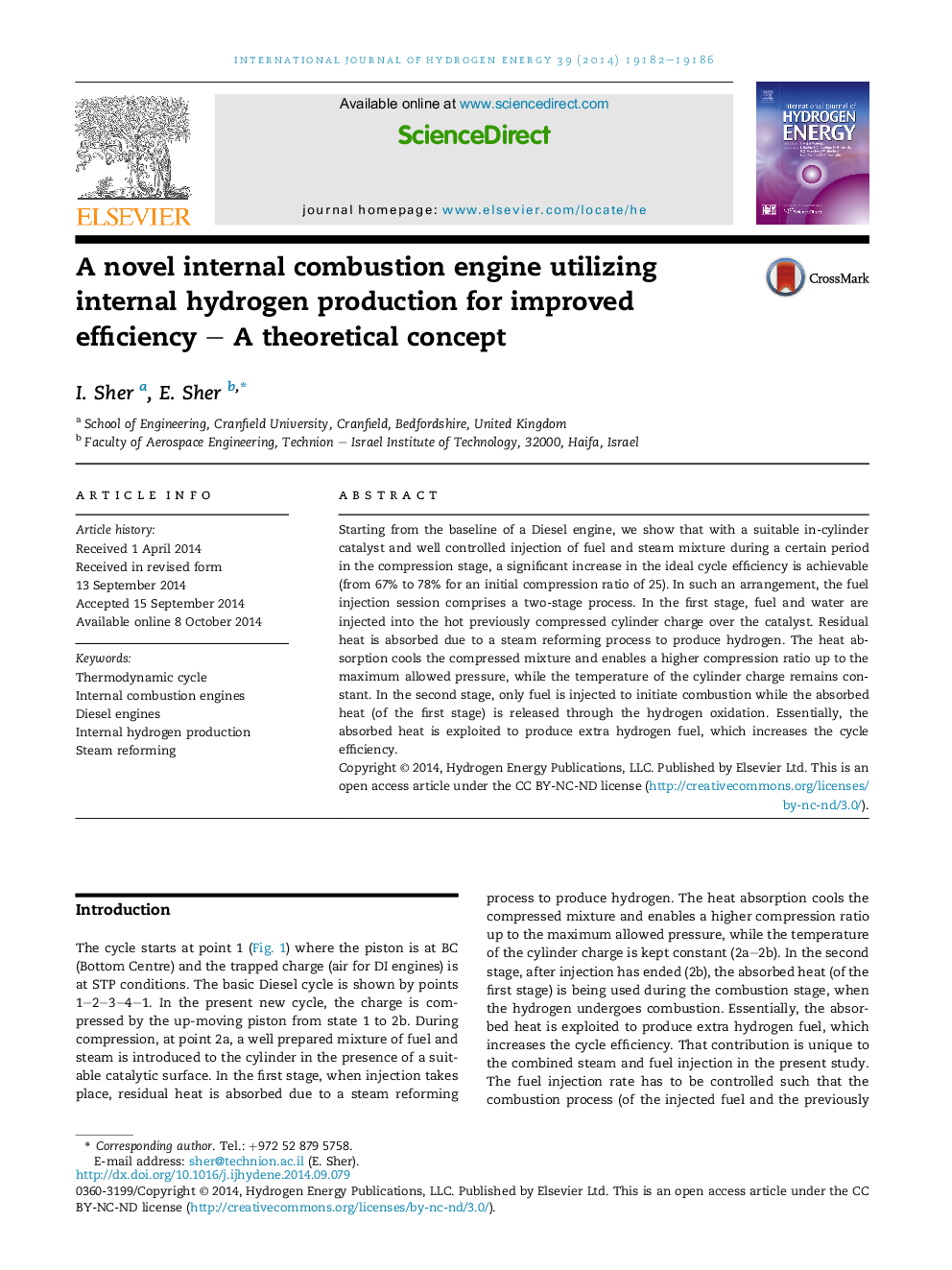| کد مقاله | کد نشریه | سال انتشار | مقاله انگلیسی | نسخه تمام متن |
|---|---|---|---|---|
| 7717745 | 1497476 | 2014 | 5 صفحه PDF | دانلود رایگان |
عنوان انگلیسی مقاله ISI
A novel internal combustion engine utilizing internal hydrogen production for improved efficiency - A theoretical concept
ترجمه فارسی عنوان
یک موتور احتراق داخلی با استفاده از تولید هیدروژن داخلی برای بهبود بهره وری - یک مفهوم نظری
دانلود مقاله + سفارش ترجمه
دانلود مقاله ISI انگلیسی
رایگان برای ایرانیان
کلمات کلیدی
چرخه ترمودینامیکی، موتورهای احتراق داخلی، موتورهای دیزلی، تولید هیدروژن داخلی، اصلاح بخار،
ترجمه چکیده
از ابتدای موتور دیزلی، ما نشان می دهیم که با یک کاتالیزور سیلندر مناسب و تزریق مخلوط سوخت و بخار به خوبی در طی یک دوره مشخص در مرحله فشرده سازی، افزایش قابل ملاحظه ای از کارایی چرخه ایده آل (از 67 ٪ برای 78٪ برای مقدار اولیه فشرده سازی 25). در چنین شرایطی، جلسه تزریق سوخت شامل یک مرحله دو مرحله ای می شود. در مرحله اول، سوخت و آب به شارژ سیلندر فشرده شده داغ بر روی کاتالیزور تزریق می شود. گرما باقی مانده به دلیل فرآیند اصلاح بخار جذب شده برای تولید هیدروژن جذب می شود. جذب گرما مخلوط فشرده را سرد می کند و نسبت فشرده سازی بالاتر به حداکثر فشار مجاز را افزایش می دهد در حالی که دمای سیلندر ثابت باقی می ماند. در مرحله دوم تنها سوخت برای شروع احتراق تزریق می شود در حالی که گرما جذب شده (از مرحله اول) از طریق اکسیداسیون هیدروژن آزاد می شود. اساسا، گرما جذب شده برای تولید سوخت هیدروژن اضافی مورد استفاده قرار می گیرد که باعث افزایش کارایی چرخه می شود.
موضوعات مرتبط
مهندسی و علوم پایه
شیمی
الکتروشیمی
چکیده انگلیسی
Starting from the baseline of a Diesel engine, we show that with a suitable in-cylinder catalyst and well controlled injection of fuel and steam mixture during a certain period in the compression stage, a significant increase in the ideal cycle efficiency is achievable (from 67% to 78% for an initial compression ratio of 25). In such an arrangement, the fuel injection session comprises a two-stage process. In the first stage, fuel and water are injected into the hot previously compressed cylinder charge over the catalyst. Residual heat is absorbed due to a steam reforming process to produce hydrogen. The heat absorption cools the compressed mixture and enables a higher compression ratio up to the maximum allowed pressure, while the temperature of the cylinder charge remains constant. In the second stage, only fuel is injected to initiate combustion while the absorbed heat (of the first stage) is released through the hydrogen oxidation. Essentially, the absorbed heat is exploited to produce extra hydrogen fuel, which increases the cycle efficiency.
ناشر
Database: Elsevier - ScienceDirect (ساینس دایرکت)
Journal: International Journal of Hydrogen Energy - Volume 39, Issue 33, 11 November 2014, Pages 19182-19186
Journal: International Journal of Hydrogen Energy - Volume 39, Issue 33, 11 November 2014, Pages 19182-19186
نویسندگان
I. Sher, E. Sher,
